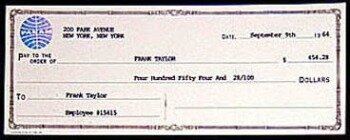Executive salaries, clerical salaries, office expenses, office rent, donations, research and development costs, and legal costs are administrative costs. Both product costs and period costs directly affect your balance sheet and income statement, but they are handled in different ways. Product costs are always considered variable costs, as they rise and fall according to production levels.
When costs are traceable to products and services, they are undeniably product costs. Being traceable means that you won’t have a hard time determining the physical quantity and its cost equivalent. Recording product and period costs may also save you some money come tax time, since many of these expenses are fully deductible. Though it may be tempting to just lump your expenses together, there are three great reasons why you need to separate product and period costs for your business. Regardless, all period costs, whether fixed or semi-variable, are considered expenses and will be reported on your income statement.
After the expenses have been recognized and recorded, the next step is to use them to prepare the financial statements. Period costs are hard to pinpoint to the business’s main products, but they are incurred nonetheless because they’re essential. Examples of period costs include rent and utilities of admin offices, finance charges, marketing and advertising, commissions, and bookkeeping fees. Finally, managing product and period costs will help you establish more accurate pricing levels for your products. Speaking of financial statements, it’s important that you take the time to review your financial statements on a regular basis.
- Put simply, understanding the costs of developing a product, feature, or update helps you make more informed decisions throughout the product lifecycle.
- The costs are classified as direct, indirect, product, process, operational, and non-operational costs.
- So, take a read of the article, that sheds light on the differences between product cost and period cost.
- Under different costing system, product cost is also different, as in absorption costing both fixed cost and variable cost are considered as Product Cost.
- Administrative expenses are non-manufacturing costs that include the costs of top administrative functions and various staff departments such as accounting, data processing, and personnel.
Examples of period costs are general and administrative expenses, such as rent, office depreciation, office supplies, and utilities. Product costs (direct materials, direct labor and overhead) are not expensed until the item is sold when the product costs are recorded as cost of goods sold. Period costs are selling and administrative expenses, not related to creating a product, that are shown in the income statement in the period in which they are incurred. In general, overhead refers to all costs of making the product or providing the service except those classified as direct materials or direct labor.
Best Account Payable Books of All Time – Recommended
Product Cost is the cost that is attributable to the product, i.e. the cost which is traceable to the product and is a part of inventory values. On the contrary, Period Cost is just opposite to product cost, as they are not related to production, they cannot be apportioned to the product, as it is charged to the period in which they arise. If the cost didn’t pass the traceability test, it is an overhead cost. Allocation is the only way to account for overhead since we can’t pinpoint its direct relationship to products and services.
Alico, Inc. Announces Financial Results for the Third Quarter and … – GlobeNewswire
Alico, Inc. Announces Financial Results for the Third Quarter and ….
Posted: Thu, 03 Aug 2023 10:40:00 GMT [source]
In this article, we have discussed what the product cost and the period costs are. The product costs can be calculated by using different approaches as job costing and process costing. This article was all about explaining both types of costs and comparing. Regardless of differences, both types are significant in the cost accounting and profit appropriation of a business entity. As shown in the income statement above, salaries and benefits, rent and overhead, depreciation and amortization, and interest are all period costs that are expensed in the period incurred.
Accounting for Managers
All the product costs are transferred to inventories before recording as the cost of goods sold in the income statement. The units that remain in the closing inventory are treated as the asset of the company. These assets are recorded in the current assets of break-even point u s. small business administration the balance sheet at the end of the year. Cost management is an even more critical job when running a manufacturing business that involves dozens of costs. The costs are classified as direct, indirect, product, process, operational, and non-operational costs.

However, it may pay off in the long run if they deliver high-quality code. Some cost-saving measures, like hiring junior developers, may result in several issues later on in the development process. Product cost plays a crucial role in determining the pricing strategy and overall profitability of a product or service. Eric Gerard Ruiz is an accounting and bookkeeping expert for Fit Small Business. He completed a Bachelor of Science degree in Accountancy at Silliman University in Dumaguete City, Philippines. Before joining FSB, Eric has worked as a freelance content writer with various digital marketing agencies in Australia, the United States, and the Philippines.
LogRocket generates product insights that lead to meaningful action
If the cost isn’t traceable and allocable to products and services, this cost is a period cost. Period costs are essential to business operations but don’t directly affect the final products. To continue our bakery example, let’s say we’re hiring an external bookkeeper to do the books.
Period Products Will Be Available for Free in Ohio Schools – The 74
Period Products Will Be Available for Free in Ohio Schools.
Posted: Mon, 31 Jul 2023 16:02:00 GMT [source]
In managerial and cost accounting, period costs refer to costs that are not tied to or related to the production of inventory. Examples include selling, general and administrative (SG&A) expenses, marketing expenses, CEO salary, and rent expense relating to a corporate office. The costs are not related to the production of inventory and are therefore expensed in the period incurred. In short, all costs that are not involved in the production of a product (product costs) are period costs.
Period Costs vs. Product Costs: What’s the Difference?
The cost of the sold units can also be segregated as separate costs of material, labor, and overhead. Product costs (also known as inventoriable costs) are those costs that are incurred to acquire, manufacture or construct a product. In manufacturing companies, theses costs usually consist of direct materials, direct labor, and manufacturing overhead cost. Allocable but nontraceable costs to products and services—like our electricity example above—are called manufacturing overhead (MOH). We still include MOH as part of product costs even if we can’t trace them directly. Product and period costs are the two major classifications of costs that have different accounting treatments.

As an owner, you rely on their accuracy to make key management decisions. This can be particularly important for small business owners, who have less room for error. If product and period costs are overstated or understated, or not recorded at all, your financial statements will be wrong as well. Managing your costs is doubly important if you own a manufacturing business, since you’ll need to manage both product and period costs. Product costs, also known as direct costs or inventoriable costs, are directly related to production output and are used to calculate the cost of goods sold. Period costs are not assigned to one particular product or the cost of inventory like product costs.
Overhead
Rather than being listed as inventory, period costs are listed as expenses for each accounting period. The product costs are sometime named as inventoriable costs because they are initially assigned to inventory and expensed only when the inventory is sold and revenue flows into the business. Examples of product costs are direct materials, direct labor, and allocated factory overhead.
- Period costs are costs that are not incurred in the manufacturing of a product.
- Finally, both executives’ salaries are period costs since they also do not work on the production floor.
- For example, you receive a utility bill each month that is not directly tied to production levels, but the amount can vary from month to month, making it a semi-variable expense.
- In general, overhead refers to all costs of making the product or providing the service except those classified as direct materials or direct labor.
Editorial content from The Ascent is separate from The Motley Fool editorial content and is created by a different analyst team. During the COVID-19 pandemic, many countries had reported low coverage for prevention, testing and treatment services for STIs, which has led to a resurgence of STIs globally. Countries with good STI surveillance, such as the United States of America and United Kingdom, are reporting increasing STIs.
Classification of cost into periods and products is generally for financial accounting purposes. A proper determination of revenues and expenses must be based on a well-defined distinction between Period cost and Product cost. Period costs or period expenses are also very elaborative by just looking at the name. The name gives a clear idea that these costs are related to an entire period or financial year. Period costs are also an essential part of the cost and managerial accounting in any business entity.
The direct materials, direct labor and manufacturing overhead costs incurred to manufacture these 500 units would be initially recorded as inventory (i.e., an asset). The cost of 300 units would be transferred to cost of goods sold during the year 2022 which would appear on the income statement of 2022. The remaining inventory of 200 units would not be transferred to cost of good sold in 2022 but would be listed as current asset in the company’s year-end balance sheet. These unsold units would continue to be treated as asset until they are sold in a following year and their cost transferred from inventory account to cost of goods sold account.

All the costs incurred by a business entity or company that do not directly relate to the manufacturing or procurement of the products sold are treated as period costs. The period costs for both manufacturing and merchandising concerns are almost the same. When the financial statements are prepared, all the product costs will be transferred to inventories held by the company. The cost of 80 units will be transferred to the income statement and will be recorded as the cost of goods sold.
Their selling expense is from the commission they pay their salespeople. Their administrative costs are from executive salaries and professional costs. Examples of period costs include administrative expenses like office supplies, utilities, depreciation, and rent. Interest expenses, marketing, and corporate sales costs are also included in this category. These are incurred whether the business manufactures or acquires goods and are considered indirect costs of production.
